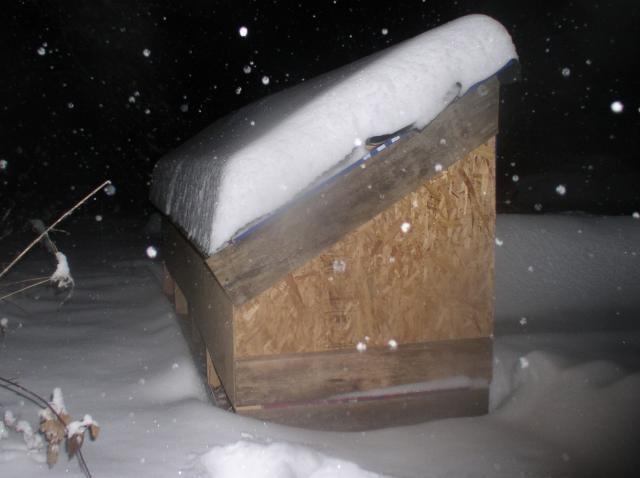I'm in very similar weather to you, Grace. I'm in north central Washington orchard country, just south of the Canadian border in high desert, just under 1000' elev. I'm working to have the recommended 4 square per bird, lots of ventilation and plenty of run for my 15 girls. I've read all of Pats excellent info on ventilation, etc...
That being said!: Look to the people around you, also. Most people around here turn over a fruit bin (4x4x2H), cut a hole in the side and throw a piece of plywood on top of the skids. The skids (about 4") and the bottom slats (1/2" between boards), together with an open door end, sitting inside a makeshift chickenwire run, seem to provide all that 4 to 6 hens need, ventilation and coopwise.

I just can't do that, anymore than I'll let my dogs ride in the back of my truck, but these folks have been doing this for FAR more years than I, and bring ME eggs, SOOOO...

I plan to have an 8x8 coop, all the wire and latches to prote ct from predators, and lots of predator proof run (10'x24'). The locals make fun of me, but I can deal with that more than I can deal with the orchard worker's dogs, eagles and hawks taking my girls...

IMHO Read, read, read, read, read! There is so much experience from both ends of the spectrum in here. Find what works for your area based on this info and those around you....
Best of luck!
That being said!: Look to the people around you, also. Most people around here turn over a fruit bin (4x4x2H), cut a hole in the side and throw a piece of plywood on top of the skids. The skids (about 4") and the bottom slats (1/2" between boards), together with an open door end, sitting inside a makeshift chickenwire run, seem to provide all that 4 to 6 hens need, ventilation and coopwise.

I just can't do that, anymore than I'll let my dogs ride in the back of my truck, but these folks have been doing this for FAR more years than I, and bring ME eggs, SOOOO...

I plan to have an 8x8 coop, all the wire and latches to prote ct from predators, and lots of predator proof run (10'x24'). The locals make fun of me, but I can deal with that more than I can deal with the orchard worker's dogs, eagles and hawks taking my girls...

IMHO Read, read, read, read, read! There is so much experience from both ends of the spectrum in here. Find what works for your area based on this info and those around you....
Best of luck!


